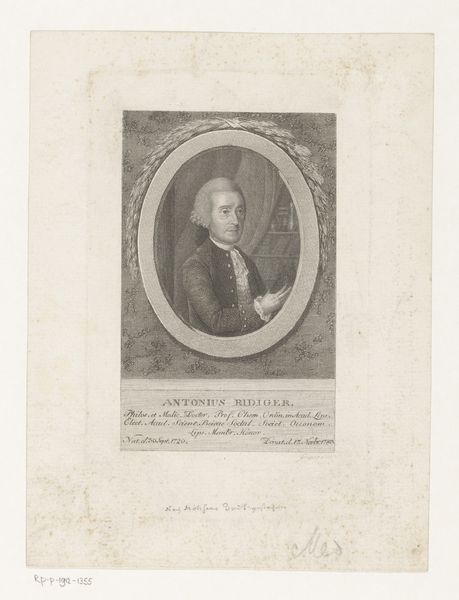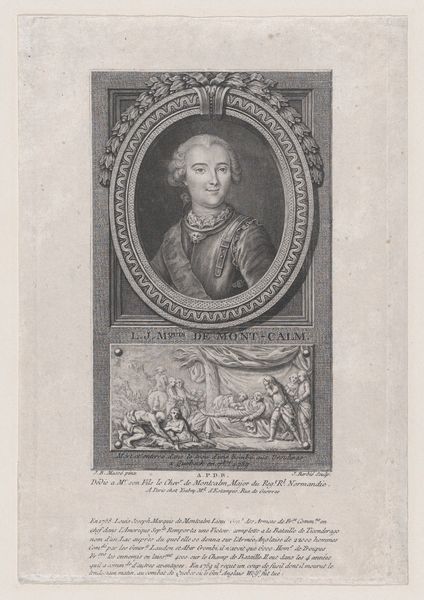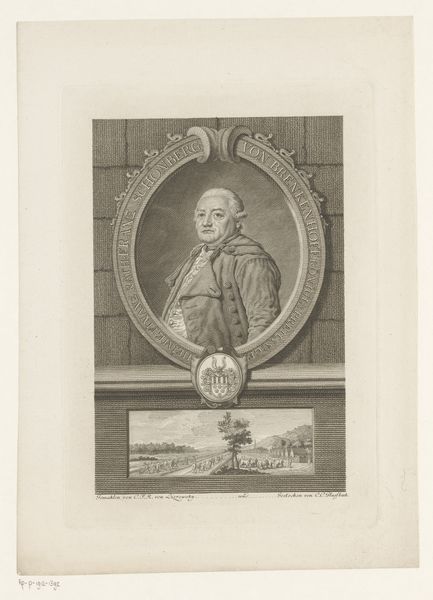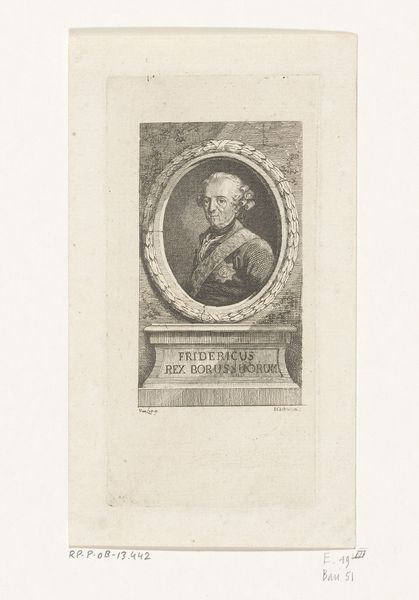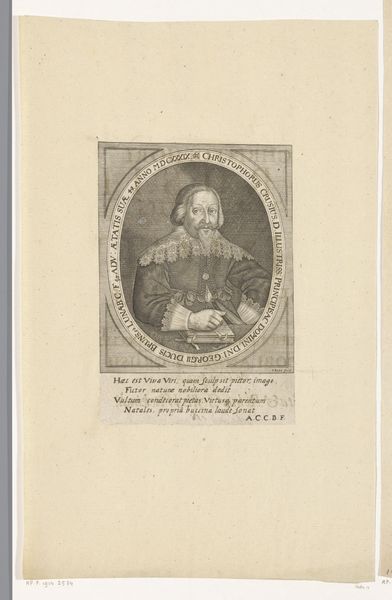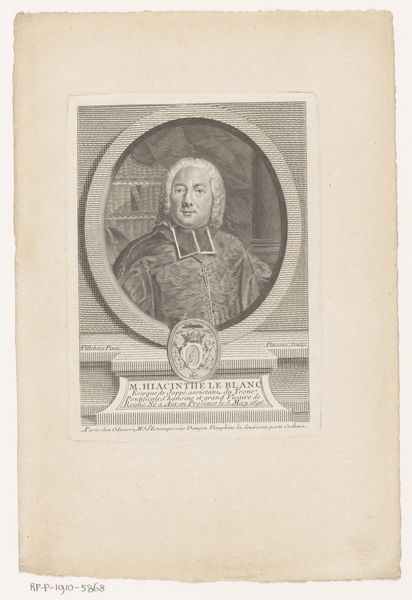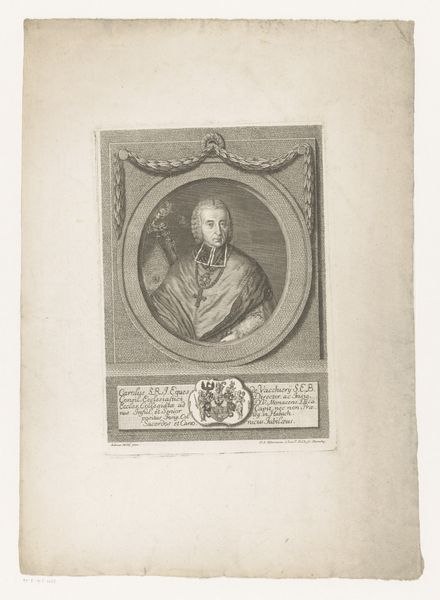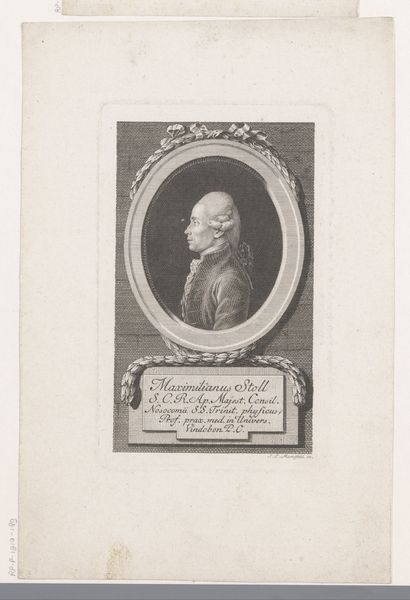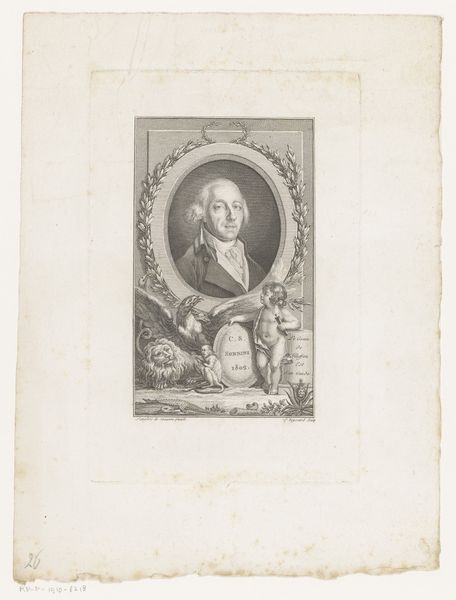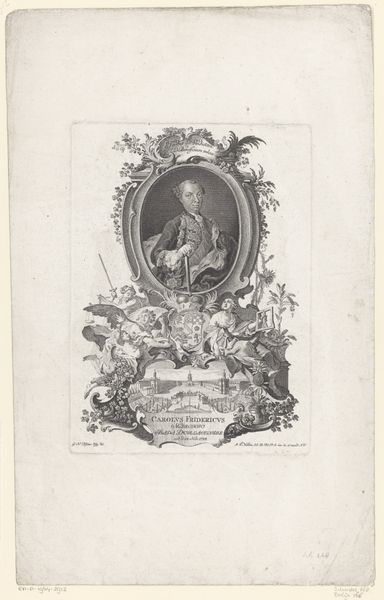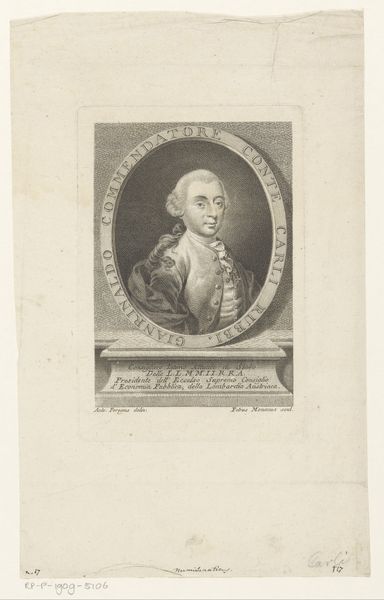
drawing, print, paper, engraving
#
portrait
#
drawing
#
neoclassicism
# print
#
paper
#
history-painting
#
engraving
Dimensions: Sheet: 9 9/16 × 6 7/16 in. (24.3 × 16.4 cm) Plate: 8 3/8 × 5 3/16 in. (21.3 × 13.1 cm)
Copyright: Public Domain
Editor: This is "Portrait of Charles Henri, Comte D'Estaing," made in 1779 by Jacques Barbié. It's an engraving printed on paper, and it’s currently hanging in the Metropolitan Museum of Art. The way the portrait is framed, above a smaller scene, feels very formal and a little austere. What compositional elements stand out to you the most in this print? Curator: Certainly, the geometric relationships are quite striking. Note the dominance of the oval containing D'Estaing's portrait, set against the rectangular structure of the print itself. This contrast immediately establishes a visual hierarchy, drawing our eyes first to the portrait. And consider how the lower scene, depicting action, is neatly contained, almost compartmentalized, below. This creates a dialogue between the static and the dynamic, controlled by the rigorous frame. Editor: So, you're focusing on the way the artist is organizing the image rather than, say, who D'Estaing was or what he did? Curator: Precisely. The formal arrangement dictates how we perceive the content. The line work in the engraving contributes as well; see how its density and direction create subtle gradations of light and shadow, defining form and adding depth. Consider, also, how the decorative wreath surrounding the portrait softens the rigid geometry. The use of ornamentation in Neoclassicism creates formal complexities for the eye, isn't it? Editor: That’s interesting – I hadn’t thought about how much the framing shapes our interpretation. It makes me consider what kind of feeling that formality conveys. Curator: Yes. The relationship of form to content offers great depth of study. Editor: Thanks, I have something new to look for in artworks like this from now on.
Comments
No comments
Be the first to comment and join the conversation on the ultimate creative platform.
